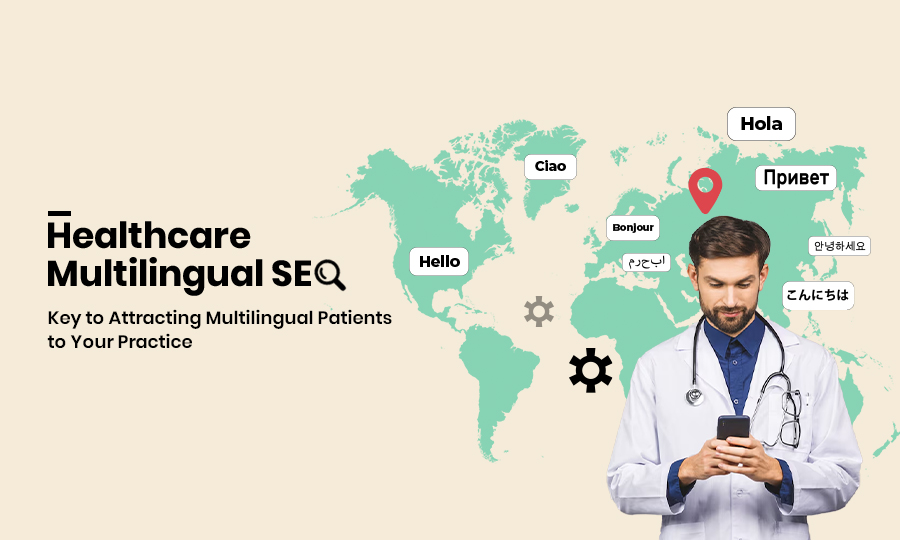Healthcare businesses often struggle to grow a worldwide audience base in today’s competitive digital marketplace. It happens mostly because they don’t prioritize building a multilingual website to promote their healthcare expertise. Healthcare multilingual SEO ensures your medical website provides the best user experience to the global audience, and you expand your business successfully.
Do you know that 50% of the Google searches are multilingual? This statistic shows that most internet users prefer to consume online content in their own language. Native language content has the potential to attract multilingual patients and make them aware of your medical expertise. It’s quite impressive to own a medical website that has a higher ranking for multilingual searches. It reflects the credibility, reliability, and authoritiveness of your healthcare practice on digital platforms.
If you have experienced difficulties growing your online patient base, it may be because you haven’t tried to expand your healthcare business in other countries as well. It is no longer an option for healthcare practitioners rather a necessity to ensure online success. Multilingual SEO for healthcare practices requires you to build a comprehensive keyword research and content optimization strategy. Explore our comprehensive guide to multilingual SEO and learn how you can grow your healthcare practice across the globe.
What Is Healthcare Multilingual SEO?
It is a specific type of search engine optimization (SEO) practice that requires healthcare professionals to optimize their website and online presence in different languages. This strategy helps healthcare practices rank higher for multilingual searches in search engine result pages. You can attract potential patients from different countries and enhance your online visibility across global markets.
It can also be considered as an SEO process where you convert your healthcare website content into multiple languages to make it accessible for worldwide healthcare consumers. It makes it easy for those users who search online healthcare content in their native languages to find your website in their organic search results.
For instance, a healthcare consumer from Spain has searched online for a healthcare service and he/she has searched in Spanish. Your healthcare practice will appear in the search results if you translate your website into Spanish and do the same optimization for your healthcare practice’s online presence.
Implementation of multilingual SEO in your medical website can offer you many meaningful business opportunities while failure to do so can lead to your missing out on many prospective clients. Professional healthcare SEO agency offers personalized services for multilingual search engine optimization and helps you drive more sales to your healthcare business from international consumers.
4 Major Benefits of Multilingual SEO for Healthcare
Healthcare multilingual SEO can completely transform your healthcare practice and make it easily accessible for prospective patients from all over the world. It will significantly attract those prospects who prefer to consume relevant content in their own language. The practice can increase your healthcare brand visibility for multilingual search queries and the list of benefits continues. Check out the reasons why you must invest in multilingual SEO for your healthcare business.
1. Global Reach of Your Healthcare Business
Your website serves as a virtual storefront for your healthcare business. Multiple languages online presence comes with an extraordinary global reach. The healthcare industry is naturally global as it is capable of addressing healthcare challenges across the globe.
When you optimize your website in multiple languages, it helps you extend your business reach. You can cover the untapped markets of different regions and make the global audience aware of your healthcare expertise.
2. Adherence to Regulatory Compliance
Different countries across the globe have unique regulations related to healthcare communications. Multilingual SEO for medical practices allows the providers to personalize their content that adheres to regional legal and regulatory requirements. It also helps the medical professionals maintain regulatory compliance and enhance their online visibility.
3. Improved Patient Experience
Effective patient interaction is critical in the healthcare industry. Multilingual SEO significantly improves the user experience of your website visitors. Most patients prefer to consume online content in their native language so that they can easily comprehend it and gain the most benefit from it.
When you optimize your healthcare website with multilingual SEO practices, your potential patients who visit your website receive the best user experience while navigating it. They are more likely to stay on your website and engage more with the content.
4. A Competitive Edge in the Industry
Healthcare is a highly competitive industry and service providers must stay competitive to keep their expertise relevant. It gives your healthcare practice a significant edge and helps you stay ahead of your market competitors.
It adds more value to your medical expertise as you provide a unique facility to the patients from different countries and regions. Thus, healthcare organizations must localize their online presence to capture the market share in regions where their competitors have failed to expand their healthcare business.
9 Steps to Perform Multilingual SEO Optimization for Your Healthcare Practice: A Complete Guide
If your potential patients are from global countries, you must consider a multilingual website for your healthcare practice to generate global traffic. Patients may leave your site without scheduling an appointment if they fail to understand your website content and comprehend the value your healthcare expertise can offer.
Multilingual SEO for healthcare is more than just the translation of your website content. It requires you to deeply understand the cultural nuances, regional search behavior, and optimization techniques. Healthcare marketers need to perform several significant practices to ensure efficacy across multiple language versions. Let’s dive into the complete process of multilingual SEO that can significantly enhance your healthcare practice’s online visibility across various countries.
1. Thoroughly Research the Market
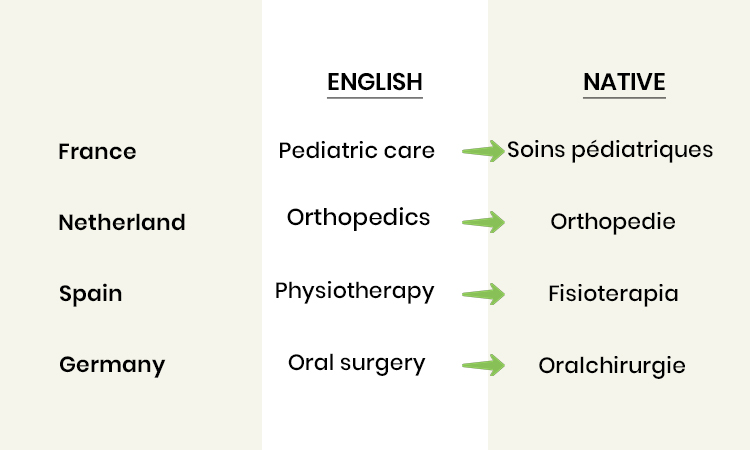
You need a solid plan to optimize your website for healthcare multilingual SEO. Firstly, ask yourself, which countries do you want to expand your healthcare business to? You must have a clear idea of this as it is the initial step of the process. It will help you proceed with the further process of multilingual SEO optimization of your healthcare practice.
Professionals must thoroughly research the healthcare market to identify their competitors and the effective SEO strategies they implement to expand their practice across languages. You need to consider those countries that show high search demand for your healthcare products and services.
If you choose these countries and regions to expand your healthcare business to, it will increase the chances of your conversions. You can use keyword research tools like SEMrush, Ahrefs, or Google Analytics to effectively perform this practice. Want to know how? Let’s have a look.
How Can You Use Tools to Identify Countries Where You Need to Expand Your Healthcare Business?
- You can select any tool as per your SEO requirements and translate your healthcare website’s content including the medical terminologies into the main language of those countries. For instance, you want to target France and check whether the expansion will benefit your business. You need to translate your healthcare website’s content into the main language of France, which is French.
- The Market Explorer feature of these tools will be helpful in this context. You can select your healthcare niche to proceed with your thorough market research. It allows you to ‘analyze category’ and navigate to the ‘market geo distribution’ section of their research report.
- With the report, you’ll get an idea of the countries that can offer high organic traffic to your healthcare practice.
4 Steps to Consider Competitor Analysis
- Consider a competitor analysis with the right utilization of these tools. For this, you need to research those countries where your market competitors have expanded their healthcare businesses. Most of the time, those countries are more likely to provide good healthcare business opportunities.
- You can enter ‘your competitor’s website URL’ in these tools’ ‘Domain Overview’ section. You’ll need to click on the ‘distribution by country’ section to get the report.
- The report will show you the countries that have brought traffic to your competitor’s website.
- Want to achieve the same amount of traffic for your practice? It’s time to translate your website’s content into the native language of those countries.
2. Conduct Keyword Research for Your Chosen Countries
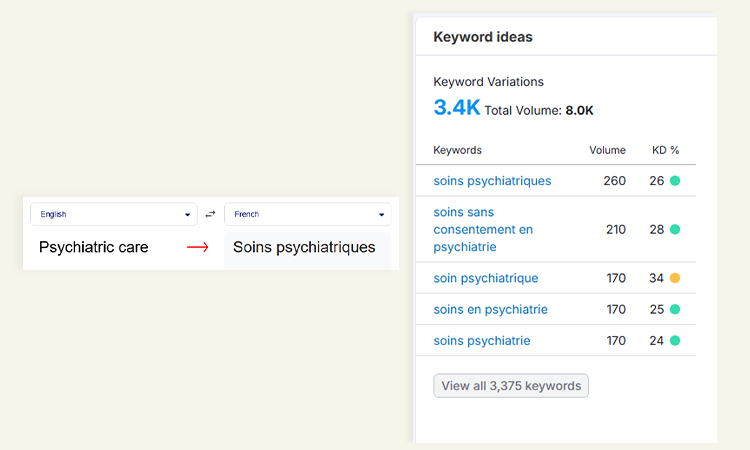
It’s the most important step to proceed with your multilingual SEO for healthcare. You need to conduct extensive keyword research, no matter whether you target a national or international market. A crucial fact to remember is that simple translations of keywords have less potential to capture the search volume in various regions.
So what’s the solution to ensure the success of your SEO keyword research? You can use local keyword research tools to find relevant and high-traffic keywords for each regional healthcare market. It will tremendously improve your practice’s online visibility for international search results.
For example, you want to target the keyword ‘chiropractic services’ to perform multilingual SEO for your chiropractic practice and attract potential patients from Germany. The keyword may translate to ‘chiropraktische Dienste’ in German. But you may find that ‘beste chiropraktische Dienste’ is more relevant in local search results.
How to Use Tools for Multilingual Keyword Research?
There are some helpful keyword research tools that you can employ to conduct keyword research for your healthcare multilingual SEO. Ahrefs, SEMrush, and Google Keyword Planner are the three most popular tools for multilingual keyword research. You need to identify your target countries and conduct the research with the help of these tools. Every tool offers certain significant features for this practice.
Let’s have a look at how you can effectively use these tools to find the most relevant keywords that can rank your healthcare practice in multilingual online searches.
- It’s time to find the seed keywords relevant to your healthcare business. What are seed keywords? It is the broad phrases or single words relevant to your healthcare business. For example, if you provide orthopedic treatments, the seed keyword will be ‘orthopedic services’. These seed keywords will help you find the other relevant and more specific keywords for your multilingual SEO.
- You can enter the seed keyword in these tools and select your target countries to search. These tools will provide you with a complete list of other keywords that have a higher search volume in that targeted country.
- You can also check the keyword difficulty of those phrases and choose those that are easy to rank.
- Auto-translation tools like Google Translate can also be helpful in this context. It will allow you to translate the keywords from English into the native languages of your target countries.
Sometimes, keyword research using these tools is not enough. You need to hire a native speaker or a translation expert to analyze seed keywords in the native language of your target country. An expert can educate you about the specific keywords and phrases that your ideal patients from your target country use. But don’t highly rely on an automated translation tool as they can hamper your keyword research tools.
Types of Keywords You Can Select for Multilingual SEO
For multilingual SEO for medical practices, service providers can use various types of keywords to rank their practice for online searches in foreign languages. Check out the list of keywords you can use for your healthcare practice.
- Long-Tail Keywords
These are broad terms with 3-4 words that have a higher potential to rank your website content. Keywords like ‘best cardiologist near me’, ‘top joint pain treatment in town’, or ‘cost of knee replacement in (region name)’ can be most helpful.
- Specialty-Specific Keywords
You can focus on your healthcare expertise niche to find the relevant keywords that can rank your practice when translated into the native language of your target audience. You can use ‘best cardiologist’, ‘local pediatric services’, or top orthopedic surgeon’.
- Disease and Condition Keywords
Through the keywords, healthcare providers can also address common medical problems experienced by citizens of their targeted country. Imagine that a cardiologist who wants to target patients from the USA and the UK finds that most of the citizens commonly experience heart problems. The cardiologist can use terms like ‘common heart diseases’, ‘best treatments for heart problems’, or ‘lifestyle changes to prevent heart issues’
- Procedure Keywords
If you provide treatment care services for a specific health care condition, you can address the treatment procedure through the keywords. Keywords like ‘knee replacement’, ‘laser eye surgery’, ‘heart surgery’, and ‘breast augmentation’.
- Location-Based Keywords
These types of keywords can be extremely helpful to attract prospective patients from the region where you can drive the most traffic for your healthcare business. You can use keywords like ‘Michigan dentist’, ‘chiropractic clinic in Berlin’, or ‘top pharmacy in Tokyo’.
Tips to Perform An Effective Multilingual Keyword Research for Healthcare
- You need to accurately translate all the keywords in the dominant language of your targeted countries for healthcare multilingual SEO.
- Conduct a thorough research to identify the search intent of your target patient market. It will help you understand whether they search for the healthcare treatment offered by you, to gather information about it or schedule an appointment. You’ll also find out whether the prospects search it for commercial or navigational purposes.
- Always choose keywords with higher search volume and lower difficulty score. Using these keywords can increase the chances of higher rankings.
- Want to target the local prospects of a specific foreign region? You need to prioritize the location-specific keywords to rank for local search.
- You can target a primary keyword for each web page and utilize secondary keywords strategically.
- You can experiment with different types of keywords to see which one performs the best.
3. Decide Your Website’s URL Structure

According to a study, multilingual websites can reach 75% more internet users who don’t speak English as their primary language. You must use top-level country-code domains (ccTLDs), sub-domains, and subsections for the international versions of your healthcare website. Each of these variations has its advantages and disadvantages for multilingual SEO for healthcare.
You must have dedicated URLs for each language and country you want to target. Search engine crawlers can easily index your site if you have a dedicated URL for your site. Then the search engines will also help the users who search for related healthcare services in specific languages.
4 Major Types of URL Structures
- Separate Domain
It is one of the most popular choices for dedicated URLs for your healthcare website. Separate domain offers you strong targeting and clear separation facilities. However, it is quite expensive and requires massive IT infrastructure investment.
You need to put in separate SEO efforts and manage multiple domains Users from other countries are familiar with the top domains of their countries. So when they land on your healthcare site, they consider it the right place to seek the services. The advantage is that you gain the ability to use localized hosting which can significantly improve your web page load times.
- Subfolder
You can use subfolders to make your website content sit within a single domain. It is quite easy to set up and the process is relatively straightforward. You need to introduce a new subfolder for the language of what you want to create a new site version.
This URL type maintains the domain authority, but you cannot use localized hosting with this specific option. Another drawback of it is that it may seem less country-specific.
- Subdomain
It allows you to clearly separate the sites and it can be hosted separately. These URLs are quite complicated to set up and you can experience technical challenges with maintenance. Healthcare marketers must build SEO authority for multiple domains as opposed to a single and main domain.
It significantly helps you use localized hosting to improve the page speed. Among all the pros, there is a disadvantage as well. Search engines like Google may treat subdomains as separate sites.
- URL Parameters
These parameterized URLs are easy to implement. But search engines like Google don’t recommend the utilization of parameterized URLs for multilingual SEO. We suggest that you avoid this type of URL structure.
Want to know why? It can cause indexing issues and confuse search engine crawlers. They may find it difficult to navigate your healthcare website and offer an accurate language version to users.
4. Translate and Optimize Your Pages
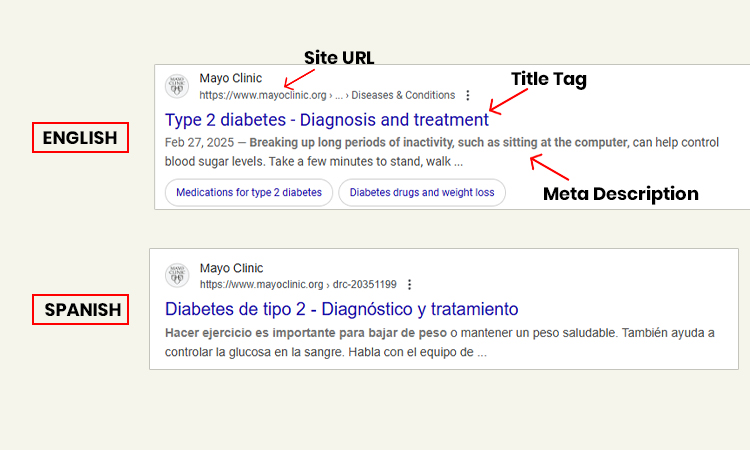
Once your URL structure is set, it’s time to translate your webpages. Another crucial work for this step is to optimize every page of your website with your target keywords and ensure their higher rankings for international searches. You shouldn’t completely rely on the machine translation tools to generate literal translations as this process is extremely significant for your healthcare multilingual SEO.
Do you know that 76% of consumers across 29 countries prefer to purchase products with information in their own language? Thus it’s important for you to employ local keyword research tools or hire a translation specialist. Automatic tools for translations often provide sentences and paragraphs that sound extremely formal or contain misconstrued information. You need to translate everything that can be translated in your target audience’s native language, such as currencies, image alt texts, and even time zones.
Wondering how you can optimize your translation for the on-page SEO elements? Let’s explore the following guide.
- Title Tags
For example, you want to optimize the title tag of one of your blog posts named ‘How to Prevent Diabetes with Home Remedies?’ You can optimize the title tag as ‘Cómo prevenir la diabetes con remedios caseros’.
Title tags must be translated accurately as it’s the main piece of information that generates a sense of interest in people to click on the content. You must keep the title tag to fewer than 60 characters as per Google guidelines. The multilingual primary keyword related to your healthcare practice must be present in the title tag.
- Meta Descriptions
It refers to the short descriptions of your page that show up in search results. It is not a direct ranking factor, but you can incorporate the primary keyword in the meta descriptions to influence the click-through rate (CTR) of your webpages.
The meta description must be short and within 120 characters, as Google cuts off such descriptions that extend over 120 characters. It is necessary to address the searcher directly using active voice in the meta description to initiate meaningful conversations with them.
- Site URLs
You need to keep the site URLs short yet descriptive as Search engines like Google trim longer ones. Want to know how you can do that? You need to add language-specific target keywords in the site URLs. It is extremely crucial in multilingual SEO for healthcare. You can use hyphens to separate words but avoid using underscores for the same purpose.
Lowercase text must be your priority for your site URLs. You must avoid symbols and dates for your site URLs. Otherwise, it can make your URL appear spammy and outdated.
- Internal Linkings
You need to ensure that to perform proper internal linking for every language version of your webpage. It helps both users and search engines easily navigate your multilingual site. For example, you can add a language switcher feature in your navigation menu that links the relevant pages in other languages.
Google uses these links to discover more pages on your healthcare website. When you’re doing multilingual SEO for a healthcare site, it’s essential to add internal links to relevant pages in the same language. For example, you must link relevant pages in the Spanish language to a Spanish page as well. If your Spanish page makes the visitors land on a page in Germany. It will also help the local search engine comprehend the relationship between your pages.
- Form Labels
Have you incorporated a form in the ‘contact us’ page of your website? If yes, you need to translate the form labels in the native language of your target audience as well. Imagine that one of your potential patients from Germany wants to contact your dermatology clinic through your online form presented on your website.
If he/she find it difficult to understand the languages of the form labels, they may lose interest in filling out the form and leave your site without a booked appointment. For example, you have added a label ‘First Name’ in your contact form. Then it will be translated as ‘Vorname’.
- Error Message
If you want to target your prospective patients from France most effectively, even the error message page of your healthcare website must be translated into French. For instance, ‘404 – Page not found will become ‘404 – Page non trouvée’ in French.
These are the basic optimizations for your healthcare multilingual SEO optimization. Once you tackle these basics, you can ensure the success of your multilingual SEO efforts. Additionally, it will enhance your healthcare site’s visibility in different languages and regions.
5. Implement Hreflang Tags
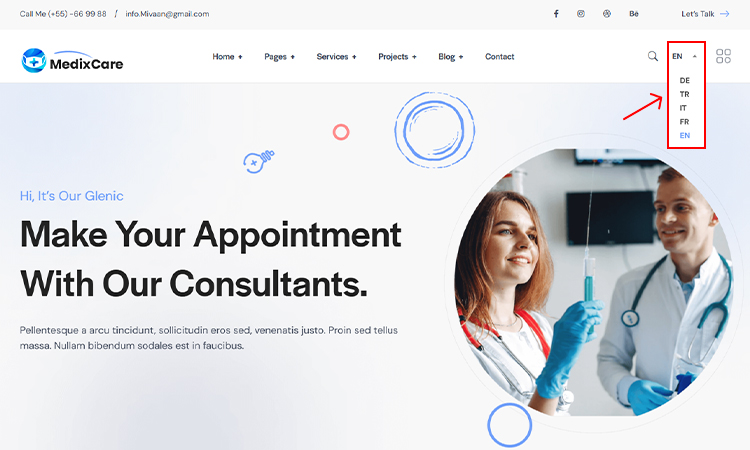
This is one of the most essential steps of multilingual SEO for medical practices. Hreflang tags refer to HTML attributes that multilingual websites use to inform search engines of the location and geographical targeting details of of them. On the other hand, these tags help search engines like Google serve the right language version of your multilingual websites when an international user searches for it in a specific language.
Checklist to Implement Hreflang Tags in Your Healthcare Website
- You need to place these tags in the <head> section of your pages.
- We suggest that you use the correct ISO 639-1 language code for every page.
- It’s important to use these tags in all the pages of your website so that the page content can be translated into multiple languages.
- You need to use self-referencing hreflang on every page of your website.
These tags are the best way to avoid issues associated with duplicate content. Some examples of hreflang tags are ‘<link rel=”alternate” href=”https://example.com” hreflang=”en” />’ and ‘<link rel=”alternate” href=”https://example.com/fr/” hreflang=”fr” />’.
6. Create Multilingual Sitemaps
What’s the next step in multilingual SEO for your healthcare website? The answer is the creation of a comprehensive multilingual sitemap. You need to develop an XML sitemap containing all your web page language versions. It’s crucial for managing multiple language versions of your healthcare site. This step is essential as it helps search engines understand your multilingual healthcare website’s structure and index it properly.
Still, does it sound complex to you? If yes, let us give you an example through which you can identify the type of sitemaps you need to create for your website.
The example of a multilingual XML sitemap looks like this:
<url>
<loc>https://example.com/</loc>
<xhtml:link rel=”alternate” hreflang=”de” href=”https://example.com/de/”/>
<xhtml:link rel=”alternate” hreflang=”fr” href=”https://example.com/fr/”/>
</url>
7. Implement Multilingual SEO for Healthcare Content Strategy
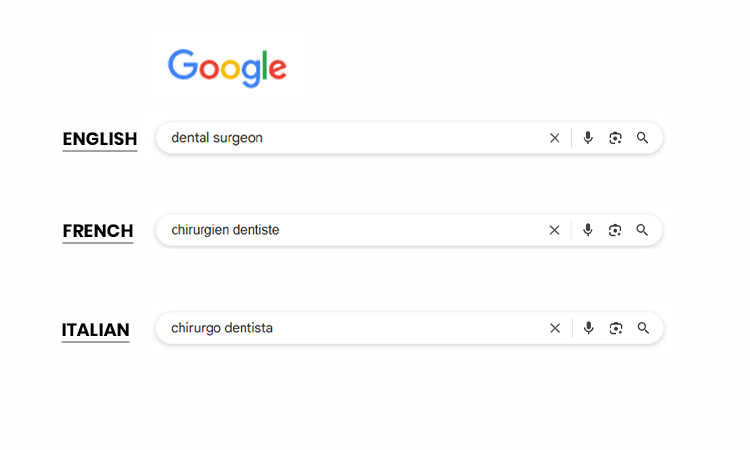
Search engine optimization or SEO is closely associated with the content marketing. It boosts the content marketing efforts and makes it more visible on relevant search results. Similarly, multilingual SEO will make your healthcare website content more visible on relevant searches by international users who seek online medical content in their native language. It will expand your content reach and help you acquire patients from different countries and regions.
Multilingual SEO is beyond the website content translation. It requires you to carefully handle the adaptation of multilingual SEO in your content and its localization. Medical care providers can seek professional healthcare content marketing services to make their website content rank for multilingual searches. Check out the process of multilingual SEO implementation for healthcare content.
- Complete Keyword Research
We have already talked about the complete keyword research process of multilingual SEO for healthcare in detail. Keyword research plays a pivotal role here, especially to improve search rankings of your healthcare content. While the process is vast, effective utilization of high-intent local keywords for every language version can help healthcare providers attract patients from their target countries.
Certain methods need ot be followed accurately to ensure the success of your multilingual keyword research. Always choose high-performing keywords that the potential patients of your target geographic location mostly use to conduct online searches for healthcare solutions. One more crucial factor is that similar phrases may not offer the same SEO results because of different intent and search volume in other languages.
You can employ local keyword tools and personally consult with a native speaker or translation expert to find the most relevant multilingual keywords for your website content.
- Cultural Adaptation and Localization
This process refers to the modification of text to make it fit into a cultural setting as opposed to changing languages. This process is associated with the translation of your website content for healthcare multilingual SEO. localization becomes more relevant than translation, especially to connect with the target audience through their native language.
For example, you can use the localized term of ‘dentist’, which is ‘dentiste’, the most-used term in France. It will be more effective than just the French translation of ‘dental surgeon’, which is ‘chirurgien-dentiste’.
Healthcare marketers must consider cultural differences and trends when they adapt content for different regions. They may need to change the treatment service details, add country-specific examples, and illustrations. Additionally, they may need to create brand-new content that’s only relevant to specific health concerns of your target patient market.
- Quality Medical Content across Languages
A professional translator or localization service can help you maintain the quality of your multilingual website content. The local audience of your target countries will easily consume your high-quality multilingual content and gain interest in your treatment offerings. Utilization of Google Translate and any other automated translation tools can often produce weird wording and increase the risk of possible misinterpretation which can harm your multilingual SEO efforts.
8. Prioritize Technical Optimization for Multilingual Websites
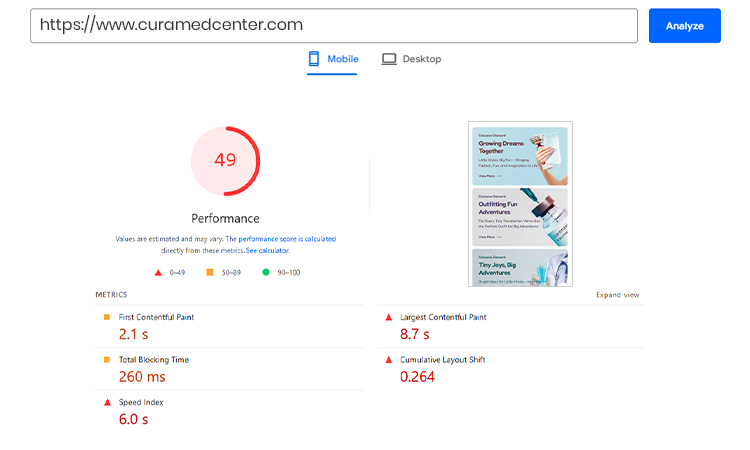
Along with the other SEO practices, technical optimization also plays a huge role in a multilingual healthcare website. Many healthcare marketers often neglect this part. Have you prioritized technical optimization? If not, you may fail to achieve better search engine rankings and drive more potential patients to your platform.
- Site Speed Optimization
Every version of your healthcare website in different languages must be optimized accurately for site speed. The server location and internet ecosystem of a region largely influence the loading speed of website pages. We suggest you implement a content delivery network (CDN) to host your content on servers closest to your diverse audience. This way the loading time will be reduced and the visitors will get a seamless user experience.
- Mobile Responsiveness
Mobile-responsive websites are the top choice of users, no matter where they are from. Every market and industry in international countries prioritizes mobile optimization for their services due to the increasing number of mobile users. Healthcare providers must develop mobile-responsive multilingual websites for their global audience. Because mobile internet usage has surpassed desktop usage in many countries. Then the responsive websites can offer seamless experience across mobile devices for multilingual SEO for healthcare.
- Multilingual Structured Data
Another important factor of technical optimization is the utilization of multilingual structured data. It will help the search engines to understand your multilingual healthcare website better and show its content in their results accurately. You can use language-based schemas and check whether your structured data is applied to every language version of your web pages or not.
9. Build Authoritative Backlinks for Your Healthcare Practice
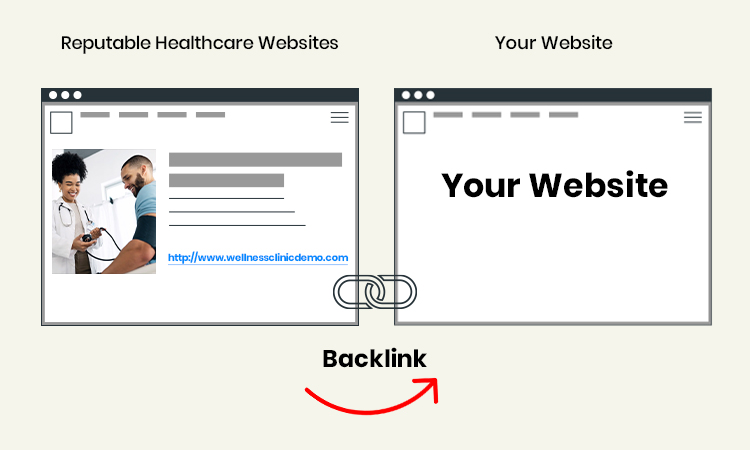
Do you want to establish authority for your multilingual healthcare website? Then you must build a strong backlink profile and stay active locally in every market of the international countries that you want to target. It’s a significant skill to acquire high-quality backlinks to boost your healthcare multilingual SEO efforts.
Factors to Consider When You Build Backlinks
- Search engines like Google consider backlinks as ‘votes’ and they significantly influence how your target audience from different regions will perceive your practice. The more valuable backlinks you have for your website content, the greater the chance you will gain to rank your healthcare website higher in search results.
- The backlinks must be related to your healthcare niche and target language. For example, you provide dental treatment services and have translated your website content into French. A link from the dental care blog that covers the available dental care treatment options in France would be extremely valuable.
- Always try to build links from reputable and authoritative healthcare websites that publish high-quality content.
3 Important Strategies to Build Links for Your Healthcare Website
- Competitor Backlink Research
Firstly, you need to research to identify your direct market competitors and examine their backlink profiles. It’ll help you get a clear idea of the backlinks your competitors have achieved till now. Tools like SEMrush and Ahrefs to find their backlinks and analyze the type of content or pages that have attracted the most amount of links. You need to check the anchor text used in competitor backlinks to identify the keywords they have focused on. Additionally, this practice will help you identify the backlinking opportunities for your multilingual medical SEO efforts.
- Utilization of Regional Social Networks
Regional social networking sites can help you promote your healthcare business and attract visitors to your multilingual site. You need to build backlinks from these popular regional social networking sites. Facebook and Instagram can be accessed internationally but you shouldn’t ignore the popular localized platforms in your target market.
We suggest that you communicate with the owner authority of these platforms in their native language to build their trust in your healthcare practice. Then they will be more likely to share what you publish your healthcare content.
- Broken Link Building
This practice requires you to find broken links, if any. You need to contact the site owners to suggest the replacement of the broken links with an alternative link from your healthcare site. Broken links often lead to a poor user experience. To start, you can look for broken pages on your market competitor’s website. Keyword research tools like SEMrush can help you in that process. You can plug your competitor’s domain into SEMrush’s backlink analytical tool and click on ‘analyze’ to find the broken pages.
- Digital PR
It is all about the media coverage for your healthcare business. You need to contact the regional media of your target countries to get their coverage for your healthcare brand. Digital PR is one of the most popular ways you can achieve authoritative backlinks for your practice. You can start with the newsworthy story sharing related to your medical care practice with the journalists of your target countries or regions. Effective communication with them will encourage them to feature your story on their publications and you’re more likely to get a backlink.
Conclusion
Multilingual SEO may seem complicated to you but it offers countless benefits for a healthcare practice. It tremendously enhances your practice’s position in international search results and globally boosts your online presence. You need to follow a strategic approach to perform the healthcare multilingual SEO practices. A multilingual SEO-friendly website structure, localized content, and technical optimization can enhance your efforts to establish a robust authority in the competitive healthcare industry.
However, it’s not a one-time process as it requires you to constantly put in efforts to optimize your effective multilingual SEO strategies. Constant optimization is crucial for the search engine algorithm changes. Implement our enlisted strategies to improve your worldwide search visibility and establish a renowned name for your healthcare business in the international market regardless of the language barriers.
Additional Resources:



























